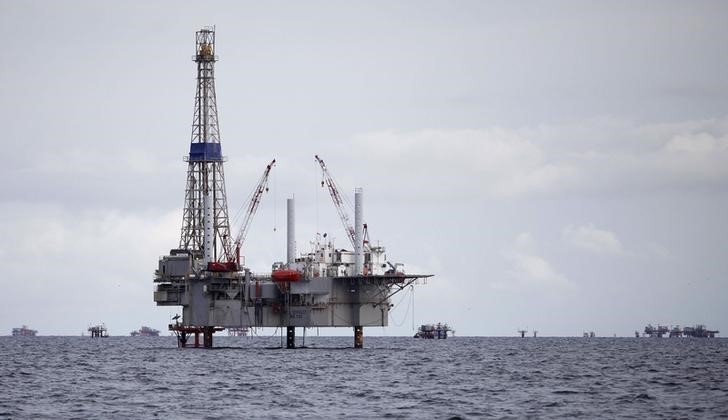Investing.com — Oil prices rose on Monday, benefiting from continued oil production disruption in U.S. Gulf states and a softer dollar ahead of an expected Federal Reserve rate cut later this week.
At 08:05 ET (12:05 GMT), the price rose 0.7% to $72.11 per barrel, while it rose 0.8% to $68.30 per barrel.
Rate cuts in focus as Fed meeting looms
Softer rates were the biggest support for oil prices after markets positioned themselves for a Fed rate cut on Wednesday.
The central bank is likely to initiate an easing cycle, although investors are divided on whether to cut by 25 or 50 basis points.
Still, lower rates bode well for economic growth, which in turn could help keep U.S. fuel demand supported in the coming months.
Continued disruption in the Gulf of Mexico
Also setting the tone was the continued disruption to production in the Gulf of Mexico following the arrival of Hurricane Francine.
Nearly a fifth of crude oil production and 28% of natural gas production in federal waters of the U.S. Gulf of Mexico remain offline, the U.S. offshore energy regulator said Sunday.
Francine hit Louisiana on Wednesday as a Category 2 hurricane, ultimately knocking out power in four southern states.
The Chinese economic figures are disappointing
But gains were limited by lingering concerns about slowing demand, especially after a slew of weaker-than-expected economic data from China over the weekend.
and both missed expectations as they went up and down.
The figures fueled concerns that slowing economic growth in the world’s biggest oil importer will dent its appetite for crude.
Analysts at ANZ said Beijing is likely to roll out more stimulus measures to support local economic growth, although they still expect gross domestic product to fall below the government’s 5% target in the third quarter.
Concerns about China have led both the Organization of the Petroleum Exporting Countries and the International Energy Agency to lower their forecasts for oil demand growth in the current year.
The holidays in China and Japan also ensured that trading volumes remained relatively limited.
(Ambar Warrick contributes to this article.)


